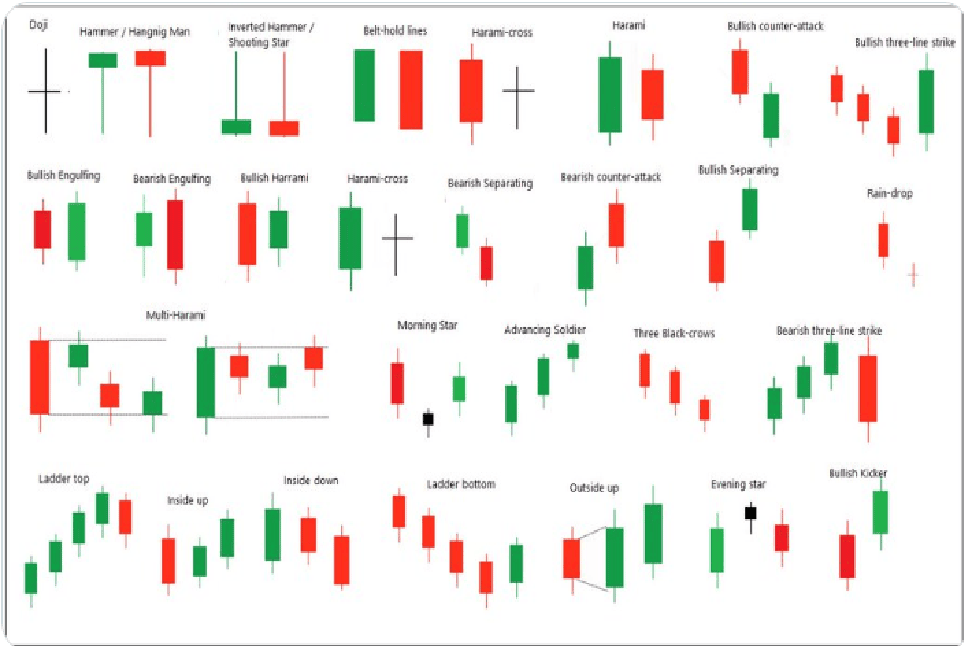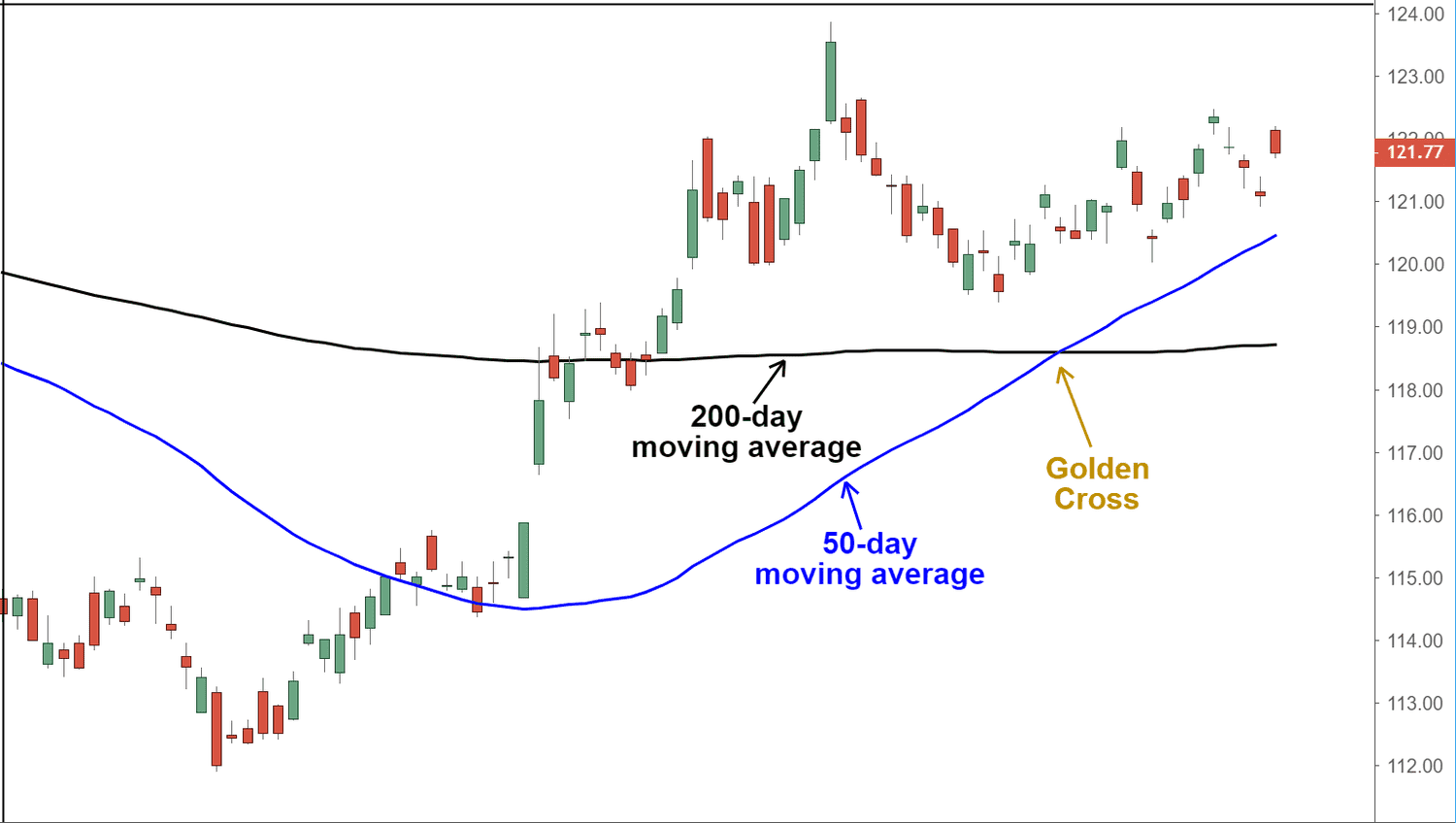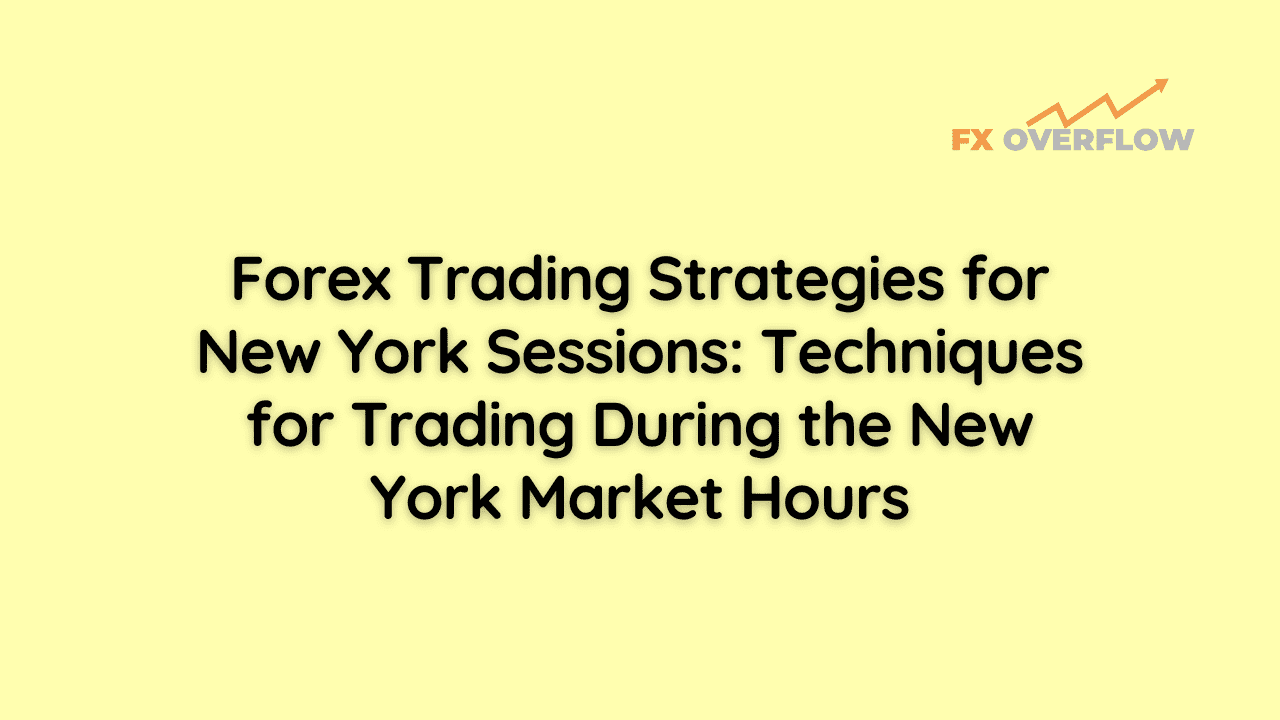Forex Trading Strategies for New York Sessions: Techniques for Trading During the New York Market Hours
Are you ready to dive into the fast-paced world of forex trading during the New York sessions? The hustle and bustle of the New York market hours present a unique opportunity for traders to capitalize on market movements. In this guide, we'll walk you through a variety of effective forex trading strategies tailored specifically for the New York sessions. So grab your coffee, settle into your trading chair, and let's navigate the exciting terrain of the forex market together.

Table Content
1. Introduction: Navigating the New York Forex Market
2. The Power of Pre-Session Preparation
3. Mastering the Art of Technical Analysis
4. The Psychology of Trading: Emotions and Discipline
5. Navigating News Releases and Volatile Events
6. Footnote
7. FAQs
Introduction: Navigating the New York Forex Market
The New York forex market hours are synonymous with high volatility and immense trading opportunities. As the financial capital of the world, the New York sessions (from 8:00 AM to 5:00 PM EST) often set the tone for the rest of the trading day. Whether you're a beginner or an experienced trader, understanding the intricacies of trading during this time can significantly enhance your success.
The Power of Pre-Session Preparation
Before the New York sessions kick off, a solid preparation routine can set the stage for successful trades. Start by staying informed about major economic events, news releases, and geopolitical developments that could impact the market. Tools like economic calendars and news aggregator platforms can be invaluable in this regard.
Mastering the Art of Technical Analysis
a) Candlestick Patterns: Illuminating Insights
Candlestick patterns are the trader's secret language. These visual representations of price movements offer insights into potential market reversals, trend continuations, and indecision points. Keep an eye out for patterns like Doji, Hammer, and Engulfing to make informed trading decisions.

b) Moving Averages: Riding the Trend Waves
Moving averages smooth out price data, helping traders identify the prevailing trend direction. The 50-period and 200-period moving averages are particularly popular among New York session traders. When the 50-period crosses above the 200-period, it's often seen as a bullish signal, while the reverse suggests a bearish trend.

The Psychology of Trading: Emotions and Discipline
i) Embracing Emotional Intelligence
Successful New York session traders understand the emotional rollercoaster that trading can be. Fear and greed can cloud judgment and lead to impulsive decisions. Developing emotional intelligence and maintaining discipline in the face of market fluctuations are crucial.
ii) Risk Management: Preserving Your Capital
In the high-stakes world of forex trading, risk management is non-negotiable. Experienced traders never put all their eggs in one basket. Adopt techniques like setting stop-loss orders and calculating position sizes based on your risk tolerance.
Navigating News Releases and Volatile Events
a) The Impact of Economic Indicators
Economic indicators and news releases can create swift and substantial market movements. Key indicators like Non-Farm Payrolls and Gross Domestic Product (GDP) releases can send shockwaves through the forex market. Traders should exercise caution during these events and consider strategies that involve pending orders.
b) Volatile Times: Strategies for Stability
During volatile times, it's important to prioritize stability over aggressive trading. Volatility can lead to unpredictable price swings, making it challenging to execute well-timed trades. Utilizing pending orders like Buy Stops and Sell Stops can help you stay ahead of the volatility.
Footnote
In summary, as you venture into the world of forex trading during New York sessions, remember that preparation, technical analysis, emotional intelligence, and strategic thinking are your allies. The fast-paced environment demands adaptability and a keen understanding of market dynamics. By implementing the strategies outlined here, you're better equipped to navigate the New York forex market and seize trading opportunities.
FAQs
Q1. What makes the New York forex sessions unique?
A: The New York sessions are known for their high volatility, largely influenced by economic news releases and overlapping with European market hours.
Q2. Is emotional discipline truly important in forex trading?
A: Absolutely. Emotions can lead to impulsive decisions. Maintaining emotional discipline helps you make rational choices even in the face of market fluctuations.
Q3. How can I manage risk while trading in the New York sessions?
A: Implement risk management techniques like setting stop-loss orders and calculating position sizes based on your risk tolerance. Never risk more than you can afford to lose.
Q4. What are some reliable sources for staying updated on market news?
A: Economic calendars from financial news websites and real-time news aggregators are excellent sources for staying informed about market-moving events.
Q5. Can pending orders really help during volatile market times?
A: Yes, pending orders like Buy Stops and Sell Stops allow you to set entry points in advance, helping you navigate through price volatility with more control.











Discussion